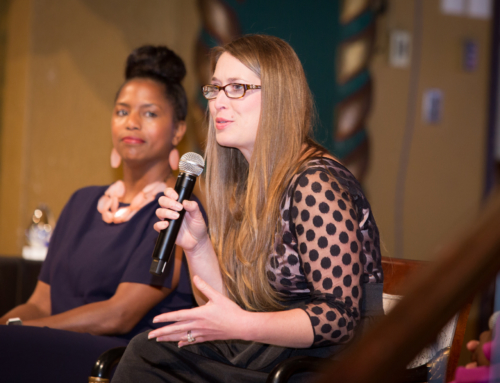 Companies present in teams often to garner high dollar sales. In some ways, team and solo presentations are alike. Both rely on the same fundamentals—setting objectives, preparing, structuring, and then presenting with the right skills and techniques. But the similarities pretty much end there, and the recognition that you’re now part of a team becomes all-important. To be successful, a team presentation must come off as just that: a team presentation.
Companies present in teams often to garner high dollar sales. In some ways, team and solo presentations are alike. Both rely on the same fundamentals—setting objectives, preparing, structuring, and then presenting with the right skills and techniques. But the similarities pretty much end there, and the recognition that you’re now part of a team becomes all-important. To be successful, a team presentation must come off as just that: a team presentation.
The team leader leads the team in deciding on the specific outcome(s) to be achieved. Most important, the team leader should guide, not dictate. The leader’s job really is to facilitate the process of deciding objectives and key messages. What response does the team want from its audience? If the team is successful, what will the audience remember about the team/company? And what will happen because of the presentation?
The leader is also responsible for determining the “mantra” for the team; the belief statements that guide the mindset and performance of the team. They should understand and accept that they succeed as a team. They should believe that they are the right team for this presentation and that they are more than capable of winning the award.
Your presentation must have clear goals.
Knowing why you’re giving the presentation helps the team set realistic goals and focuses the conversation. Think about the outcomes you want to elicit. Narrow your list to those that are most important. A good rule is to focus on no more than three essential goals to achieve. And, of course, you may decide to have only one key goal.
From this, move to an overarching theme that ties the individual parts of the presentation together. You can then begin to see the unifying elements within the overall scheme and how they link to one another. The team now begins to get an idea of the parts that each member will discuss.
Determine your opening 10 seconds and practice that so it comes across very strong, with a good dose of inflection. Your opening should tell the audience why they should listen to you. State your goal(s). Make the opening so interesting that the listeners really want to listen to the rest of your talk. For example, “In the next 45 minutes, you’ll decide for yourselves that our software fills a giant void in the sales market, allows you to track your customers’ time on your site, and can act as a bridge between the manufactures and the distributors.”
Preparation is critical.
Preparation is even more essential to a team than it is to a solo presentation. Preparation helps you establish credibility and “polish” as a team.
As you prepare, organize your individual presentations as if they were each part of one continuous presentation spoken by several people instead of one person. It may help to think of these as chapters in a book, with a storyline running through the book leading to a specific end.
Decide who should present specifying topics depends on your overall objectives and the expertise and skills of each person. Among close colleagues, that’s usually an easy decision. In any case, consider the special knowledge and job experience of each member and how that fits into the overall presentation.
Your team preparation must include a careful analysis of your audience. Do your best to be well informed. Who are the decision makers? Who may (or will) be argumentative or at the least indecisive? Who responds better when they are included in a more conversational style of presentation? Who is already rooting for you to win the award?
Focus on transitions.
During your preparation, focus especially on transitions. These are the all-important bridging elements that conclude one section and lead to the next. Each presenter should wrap up his or her own segment, then establish a link to the next presenter. Wherever appropriate, each presenter should include brief references to the key points made by the other speakers. This reinforces key messages and helps your audience retain information.
Visuals
Prepare visuals to support your spoken words. Use a single template, with everyone following the same design guidelines. Use the same color coding and consistent font style and size throughout. And, of course, stick with the same graphics software. Review your slides. Do your visuals support or detract from the spoken content?
You’re “on,” even when you’re not speaking.
In a team presentation, everyone is being watched, not just the presenter. So stay alert. Listen. Show interest in what’s being said. Remember: your body language can convey a positive or negative message. Stifle that yawn. Don’t slouch or look bored. And unless it’s absolutely necessary, do not whisper an aside to another team member. Also pay attention to the audience. You may pick up signs helping you to gauge audience response. That can be useful if you have yet to present.
Focus next on the role of non-speakers, noting that there will be a rotation of non-speakers. When not speaking, who is the best person to watch the listeners for body language and signs of “getting it” or “not getting it”? Who should listen critically to the speaker’s content to make sure the message is clear and concise?
Rehearse as a group—early and often.
Practice the presentation as a group. Focus on content first. Be sure it is jargon-free.
Next, concentrate on how each person clearly communicates the words and message you’re intending to convey. Focus on how interesting and effective each presenter is during his/her section. Does he sound interesting and look interesting? Does she sound confident and look confident? Your goal is to come across as likeable, trustworthy, and expert.
Finally, consider the questions you are likely to receive. Anticipate questions that are likely to come up and agree as a team on the answers. Agree in advance which team member or members would be best suited to respond to such questions. Practice interrupting the speaker to ask a clarifying question on the behalf of the listeners. Practice tossing a “softball” to the speaker to address a missed point or to re-address an important concept.
Dress Rehearsal.
As scheduled, do a final practice. Everyone should come to this session with a fully practiced presentation. This is not your first practice or even your third practice. This is final preparation. Assemble a small live audience if possible to serve as a sounding board. Think of this as a dress rehearsal before opening night. It’s likely you’ll still find a couple of things to improve upon. If you find many, it’s a sign that each is not practicing enough before the dress rehearsal.
When it’s time to present.
The team should arrive early to the meeting site. Click through the visuals and get comfortable with the equipment and physical setting. Practice with the microphone if you’re going to be using one. Know where to find technical help, just in case. Encourage each other. Do a few warm-up exercises to work through any jitters.
Knowing and adapting your environment is important to doing the best work you can do for your audience. It’s even more important when the presentation is taking place before a large audience.
A final note.
Show your confidence. Be proud of your company’s success and your solution for your audience. Know that you will succeed and that this project is yours!




